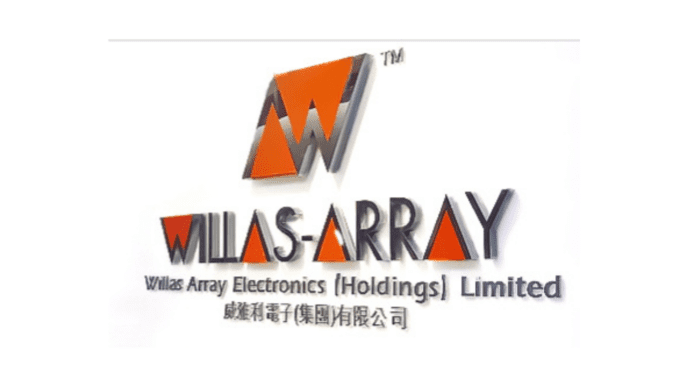Willas-Array Electronics (Holdings) Limited (‘Willas-Array’, the ‘Group’ or ‘WAE’), one of the largest Hong Kong-based distributors of electronics components in the Greater China region, has achieved net attributable profit of HKD82.2 million for the year ended 31 March 2022 (‘FY2022’), down 11.1% from HKD92.5 million the year before (‘FY2021’). This translated to earnings per share of HK96.33 cents, down 11.2% from HK108.54 cents in FY2021.
WAE registered revenue of HKD3,425.8 million, down 3.7% year-on-year (“YOY”) from HKD3,557.9 million, owing to lower revenue contribution from many of the Group’s segments. The lower revenue contribution came mainly on the back of persistent imbalance between the supply and demand of electronics components with demand far outstripping supply especially for semiconductor chips. This situation caused gross profit margin to increase from 9.4% in FY2021 to 9.8% in FY2022.
Performance Review
Despite the weaker FY2022 results, the Automotive segment was one of the Group’s bright spots amid an increase in electronic content in vehicles. The segment contributed higher revenue of HKD710.8 million in FY2022, up 11.7%, compared to FY2021. This made the Automotive segment the second largest revenue contributor in FY2022, leapfrogging the position previously occupied by the Group’s Home Appliance segment for the first time.

It was also the first time revenue from the Automotive segment constituted over 20.0% of WAE’s total revenue, which affirmed the Group’s strategy to focus its resources on this growth segment. Given the substantial growth opportunities in the automotive sector, especially in the development of electric vehicles, the Group will continue to allocate resources to this space.
Although the Industrial segment remained the largest revenue contributor to the Group, it recorded revenue of HKD1,010.4 million in FY2022, down 3.7% as compared to FY2021. This was due to a shortage of components for the segment’s applications in power supply, DIY tools, motor application and LCD modules, which could not fulfil the pandemic-led demand for consumer electronics products and small home appliances arising from the stay-at-home lifestyle.
The Home Appliance and Audio and Video segments contributed marginally lower revenues of HKD660.8 million and HKD238.9 million, respectively. This was due to the inability of both segments to cope with the escalating demand given the global shortage of components.
Likewise, the Dealer, Telecommunications, EMS and Lighting segments were impacted by the global shortage of components. These segments registered double-digit revenue declines as other key growth industries were prioritised and allocated semiconductor chips ahead of them. WAE will strive to allocate resources to meet the requirements of these segments. However, the Group believes a meaningful improvement can only be achieved by an improvement in the demand-supply balance.
Willas-Array’s Chairman, Lawrence Leung, said: “With the global shortage of semiconductor chips, many companies – including us – faced difficulties in obtaining sufficient supply to meet the strong demand. However, our strong relationship with our suppliers enabled us to fulfill the minimum requirements of our customers.
“As the situation is not expected to ease soon, we will continue to work closely with our suppliers to ensure minimal disruption to our customers. We will also strive to develop new applications in collaboration with our partners so that our mutual goals can be achieved.”
As at 31 March 2022, the Group had a working capital of HK$499.4 million, which included a cash balance of HK$327.7 million, compared to a working capital of HK$423.3 million, which included a cash balance of HK$216.9 million as at 31 March 2021. The increase in cash of HK$110.8 million was primarily attributable to the net effect of cash inflow of HK$149.4 million generated from financing activities and cash outflow of HK$35.6 million used in operating activities. Net gearing ratio as at 31 March 2022 was 37.0% as compared to 39.6% as at 31 March 2021 due to the increase in both cash balance and shareholders’ equity.
Press Release Received on Mail






